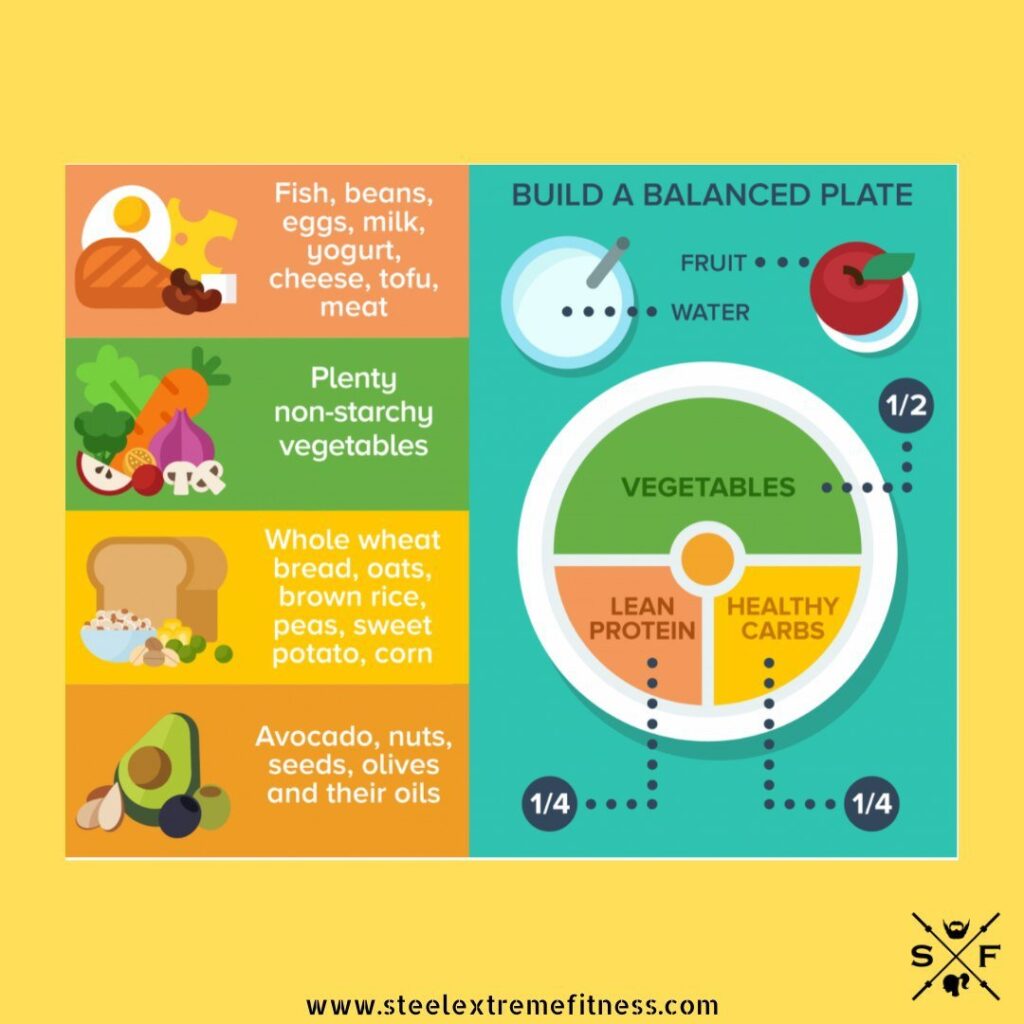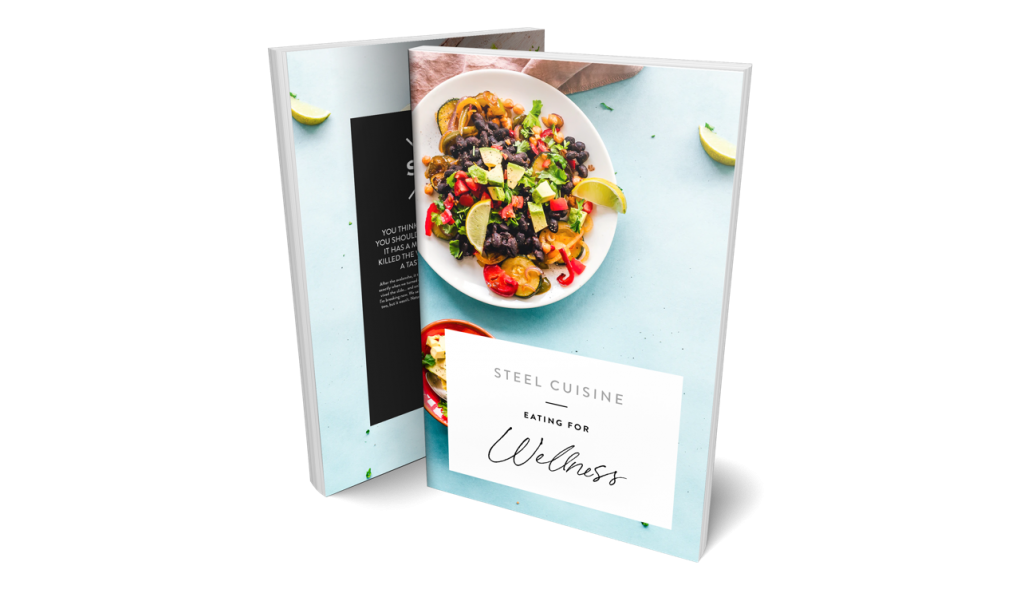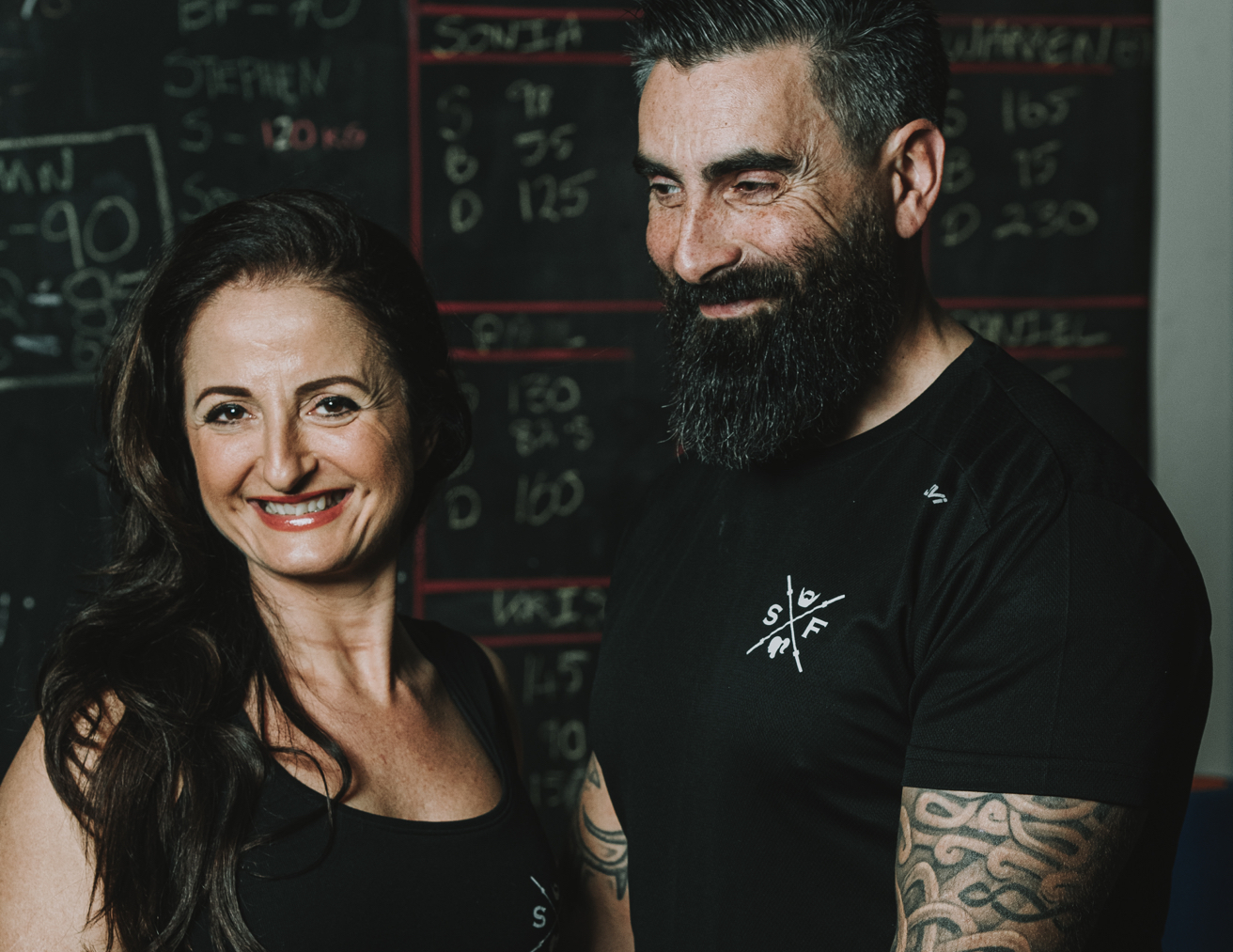Blog A simple guide to building a balanced plate.
This easy-to-use guide aims to bring balance to your plate without the need to pull out measuring cups or a scale.
The goal is simple: Fill half your plate with vegetables, a quarter with healthy carbohydrate-rich foods, a quarter with lean protein foods, and a small dollop of healthy fats.
Throughout the day, snack on a couple of pieces of fruit and sip on mostly water. When you approach each meal with this mindset then no matter your dishware—bowl, plate, lunchbox, 3-course meal—you will be able to build your own healthy, balanced meal.
Wondering which ingredients fall into which portion of your plate? It’s simple when you understand that foods with similar nutrients like macronutrients, vitamins, and minerals can be grouped together. Let’s take a look at each portion of the plate in a little more detail.
VEGETABLES: FILL ½ OF YOUR PLATE WITH COLOURFUL, NON-STARCHY VEGETABLES
Vegetables are an important source of nutrients, including potassium, dietary fiber, folate (folic acid), vitamin A, and vitamin C.
Choose: A variety of colorful fresh, frozen, and canned vegetables, making sure to include a variety of different colors, in particular dark greens, reds, and oranges.
Ideas to try:
Green = Dark leafy greens, cabbage, asparagus, broccoli, cucumber, herbs/spices
Red = Tomatoes, radishes, peppers, rhubarb
Purple = cabbage, cauliflower, eggplant, red onion, kale
White = mushrooms, cauliflower, parsnips, turnips, garlic
Yellow = Bell pepper, spaghetti squash, summer squash, turmeric, ginger
HEALTHY CARBS: FILL ¼ OF YOUR PLATE WITH
CARBOHYDRATE-RICH FOODS
Ingredients that are rich in healthy carbs include starchy vegetables and whole grains.
These foods provide many nutrients, including dietary fiber, several B vitamins (thiamin, riboflavin, niacin, and folate), and minerals, like iron, potassium, magnesium, and selenium.
Choose: Mostly whole grains like whole wheat, rolled oats, barley, farro, millet, quinoa, brown rice, or grain products, like 100-percent whole-wheat bread, breakfast cereals, tortillas, and pasta. And starchy vegetables like sweet potatoes, potatoes, green peas, sweet corn, and squash.
Limit: Refined grains, like white bread, white rice, pasta, and products made from white flour.
LEAN PROTEIN: FILL ¼ OF YOUR PLATE WITH LEAN
PROTEIN-RICH FOODS
Foods that provide high levels of protein include animal products like meat, eggs, and dairy, and plant proteins like beans, lentils, and soy. These foods provide not only protein but B vitamins (niacin, thiamin, riboflavin, and B6), vitamin E, iron, zinc, magnesium, and calcium.
Choose: a variety of different animal protein foods, including fish, seafood, eggs, lean meats, poultry, and low-fat dairy. And plant-proteins like beans, lentils, edamame, tofu, tempeh, and soymilk.
Limit: fatty cuts of meat and processed meats, like sausages, hot dogs, salami, and bacon.
HEALTHY FATS: ADD A SMALL DOLLOP OF HEALTHY FATS
Oils derived from plants and fish provide essential fatty acids, mono- and polyunsaturated fats, and vitamin E.
Choose: healthy plant oils found in avocados, olives, nuts, and seeds. Cook with plant oils that are liquid at room temperature, such as extra-virgin olive oil, avocado oil, and nut and seed oils.
Limit: fats that are solid at room temperature, including lard, butter, shortening, bacon grease, coconut oil, and palm oil—all of which can raise your “bad” LDL cholesterol.
FRUIT: EAT SOME FRESH, WHOLE FRUIT
Fruit is packed with a number of essential nutrients, including potassium, dietary fiber, vitamin C, and folate (folic acid). Have a piece of fruit as a part of your healthy carbs, as a snack, or a healthy dessert.
Choose: fresh, canned, or frozen, and eat fruit whole, cut-up, or pureed.
Limit: your portions of dried fruit and fruit juice—they’re higher in calories, deliver more sugar, and are easy to overconsume.
Ideas to try:
Green = Kiwi, grapes, apple
Red = Strawberries, raspberries, watermelon, pomegranate
Purple = Blackberries, plums
White = Bananas, white nectarines, white peaches
Yellow = Cantaloupe, grapefruit, mango, pineapple
WATER: DRINK MOSTLY WATER
Stay hydrated throughout the day with water and low-calorie beverages.
Choose: Tap, sparkling, carbonated, or still water, unsweetened tea, and coffee.
Limit: Sugar-sweetened drinks like soda, energy drinks, sports drinks, sweetened coffee, and tea.
This information is for educational purposes only and is not intended as a substitute for medical diagnosis or treatment. You should not use this information to diagnose or treat a health problem or condition. Always check with your doctor before changing your diet, altering your sleep habits, taking supplements, or starting a new fitness routine.

Create delicious, wholesome, & calories controlled meals


Offering the best personal trainer and nutrition advice in Malta, Steel Extreme Fitness offers you private gym membership – where you will feel right at home.
© 2020 Steel Extreme Fitness. All Rights Reserved